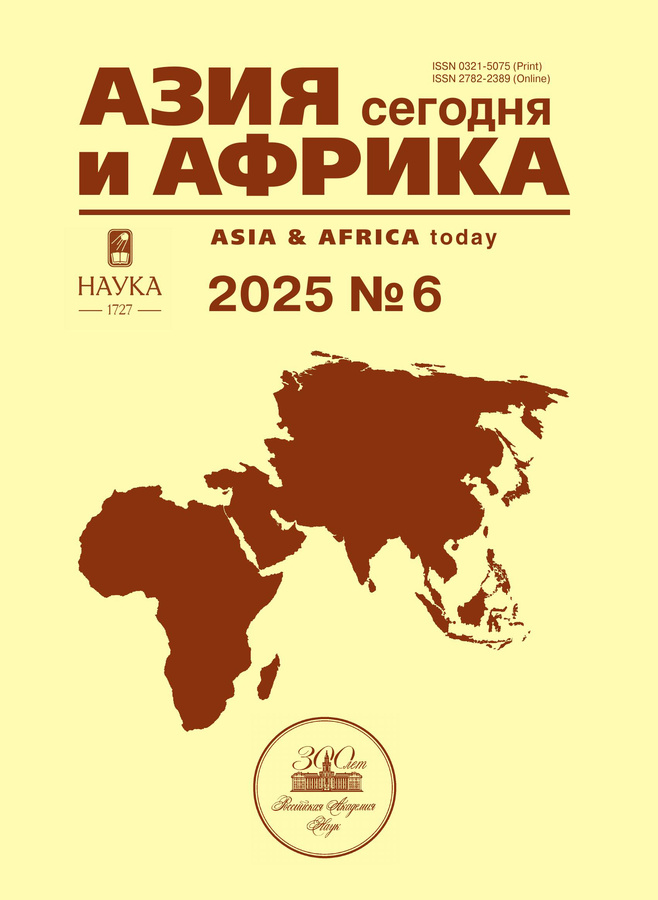No 6 (2025)
Top problem
Features of the Current Situation in the Greater East Asia
Abstract
 5-13
5-13


Politics, economics
Economic and Social Determinants of Sub-Saharan Africa’s Development. Part 2
 14-25
14-25


Dynamics of Development of Islamic Education in Mauritania
Abstract
 26-34
26-34


Ethiopia: The Amhara Conflict, or the Fano Rebellion
Abstract
 35-44
35-44


Pondicherry as Part of the Republic of India: The Administrative and Territorial Issue
Abstract
 45-51
45-51


Indian Diaspora in East Africa and Its Role in the Development of Indian-African Economic Relations
Abstract
 52-61
52-61


International North–South Transport Corridor: Socio-Political Reasons of Development
Abstract
The paper discusses the main socio-political reasons for the development of the International Nоrth–Sоuth Transport Corridor – one of the most promising infrastructure development projects in Eurasia. These reasons are discussed in the context of the historical development of trade routes in the Caucasian region, as well as current political events, such as the change of government in Iran in 2024 and the re-election of Donald Trump as the president of the US. The factors of the Corridor’s development should be understood as a nexus of political and social developments in the region and globally. The project faces serious challenges due to its decentralized development (there are many powerful stakeholders with conflicting interests) and rapidly changing international structure and system. The authors suggest going beyond studying economic or logistical reasons for the development of new trade routes. The socio-political reasons for the Corridor should be divided into categories, such as geopolitics, economic interests, security interests, and regional connectivity, and studied as a whole to understand the ramifications of these processes. The negative factors, especially the most acute problems, such as chokepoints, must also be taken into account.
 62-69
62-69


Post-graduate tribune
China’s Digital Silk Road: Opportunities and Risks for Developing Countries
Abstract
 70-77
70-77


Book review
 78-81
78-81












